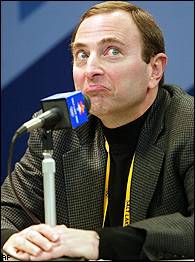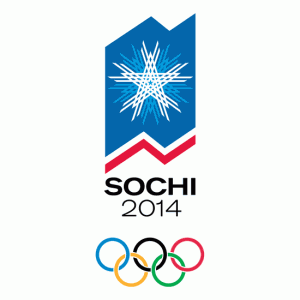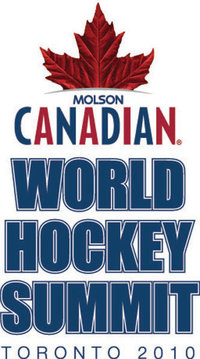Top 10 ideas the National Hockey League should institute
 With the National Hockey League’s 30 general managers currently meeting in downtown Toronto to discuss changes to rules and policy, I figured I’d take the opportunity to chime in with my two cents. Times 10. My 20 cents, if you will.
With the National Hockey League’s 30 general managers currently meeting in downtown Toronto to discuss changes to rules and policy, I figured I’d take the opportunity to chime in with my two cents. Times 10. My 20 cents, if you will.
Lengthen overtime
Extending overtime is already on the table as the GM’s try to cut down on the number of shootouts, but I wanted to voice my support for this idea.
Right now, the extra period is just five minutes of 4-on-4 followed by the shootout. OT is the tensest period of play in any hockey game with each penalty, missed pass or deflected shot putting the game on the line.
There’s been a lot of talk of having five minutes of 4-on-4 and then five of 3-on-3. The former doesn’t really strike me as too interesting - I don’t see why they couldn’t just do 10 minutes of 4-on-4, or, what the hell, a full 20 minutes of 4-on-4 followed by the shootout.
It’ll still cut down on the number of shootouts and will create more tension and therefore more excitement. Fans tend to enjoy excitement.
Get rid of archaic blackout rules
As I’ve mentioned before, my fiancée Katy and I are a mixed couple – I’m a Leafs fan and she supports the Oilers.
It makes for the occasional tense moment, but what really aggravates things is that we can only watch the Leafs and rarely the Oilers thanks to the NHL’s ridiculous TV blackout rules. This regulation prevents anyone with a standard cable package from watching an out-of-market hockey game.
In other words, although Sportsnet West was carrying the Edmonton-Carolina game last night, we could only watch the Toronto-Tampa Bay match or the Washington Capitals-New York Rangers game. I understand the original reasoning behind this rule was to keep fans interested in their hometown markets.
However, this hurts the NHL more than it helps. If a fan in Minnesota wants to cheer for the Pittsburgh Penguins, then so be it. Associating yourself with frustrating rules that limit your fans ability to watch your product is never a good idea. Dropping this ridiculous regulation would also tie in with…
Embracing fantasy hockey
I think we can all agree that the National Football League is the best run professional sports league in North America and arguably the world. So why not tear a page out of their playbook and embrace fantasy sports?
In addition to showing the scores from games, the NFL runs tickers of the top five stat lines from each position during their Sunday broadcasts. That running update on the individual success of its players is aimed straight at fantasy football managers eager to see how their personal team is doing.
The NHL should do likewise: run a ticker with the statistics of the top five forwards, defenders and goalies each and every broadcast night.
Clamping down on vague “lower body injury” reports would be a good idea as well. Force the teams to reveal more details about their hurting players for the benefit of fantasy hockey managers. Anything to make fantasy hockey more accessible and enjoyable.
Show where shots are coming from and going
This has long been a bugbear of mine. During games broadcasters will happily tell you how many shots a goalie has faced. That’s all well and good, but not all shots were created equal. A shot from the slot is a lot more dangerous than one from the blue line.
Hockey broadcasts should show where on the ice players are shooting from and where they’re going on net. The technology is already there – Major League Baseball can track the trajectory of pitches and the National Basketball Association regularly shows where players shoot from on the court.
Both concepts should be applied to hockey. It would really help viewers understand the underlying strategies and tactics within a game as patterns begin to emerge in shot selection and location.
Is the defence successfully pushing forwards to the outside? Are they giving up a lot of breakaways? Is the power play unit feeding to the rearguard for big shots, or working it down low? Are shooters trying to pick top corners, or shooting along the ice for big rebounds? It would really add more depth and understanding for the average viewer.
No touch icing
The favourite hockey cause of the CBC’s Don Cherry, no touch icing is an idea that is long past due. With increasing concerns about head shots and concussions, why is the NHL persisting in having a rule that routinely has two players racing the full length of the ice toward unforgiving boards? Just take it out of the game already!
Crossover playoffs
The NHL has a lengthy and rich history, particularly amongst its storied Original Six franchises.
Unfortunately, thanks to their current playoff system, many of the oldest rivalries in the game will never be put on the league’s biggest stage: the Stanley Cup final.
The Montreal Canadiens and Toronto Maple Leafs, the biggest and best feud in all of hockey will never play with the NHL championship at stake again. Neither will the Chicago Blackhawks and Detroit Red Wings or the Habs and Boston Bruins.
My solution is actually an old idea: have the top 16 teams in the league in one playoff pool. President’s Trophy winner will take in the 16th seed, the other conference champion will take on No. 15, and so on. It’s how the playoffs were structured in the 1970s and 80s, and it’ll work again today.
Get back in touch with the history of the game
Other than the MLB, there is no major North American sport that has as rich a history as the NHL. Unfortunately, commissioner Gary Bettman clearly sees this as a weakness and tries to cover up or even undo a lot of the league’s historical underpinnings.
This is a mistake.
By shying away from that history it makes the NHL seem like a new, fly-by-night operation, particularly when franchises are being parachuted into Sunbelt markets that are unfamiliar with the game.
The NHL should embrace its past with throwback jerseys, prominent marketing of its namesake trophies (like the Lady Byng) and make sure to compare today’s stars with some of the legends of hockey. History and tradition are strengths, not weaknesses.
No more two-piece sticks
Look, I’m all for innovation. I’m not some Luddite who poo-poos every new idea. But let’s get real: two-piece hockey sticks break a lot more than good ol’ fashion wooden sticks.
Not only is this dangerous to players, linesmen and potentially fans, but it slows down the game as the remnants of that $200 fibre composite is cleared off the ice. If an all-wooden stick was good enough for Al MacInnis’ record holding slap shot, it’s good enough now.
Reinvest in amateur hockey
I don’t actually think that the Sun Belt expansion was that bad an idea. New markets and new fans really can work. It just wasn’t done right.
The NHL should take the time to invest in amateur hockey at the grassroots level because those are the fans – and players – of the future.
Amateur hockey would help educate parents and kids about the sport and create an instant niche market of coaches taking their teams to games.
When moving in to Phoenix, Miami or Atlanta the league should have set up minor hockey systems to introduce those cities to the sport. Obviously, that ship has sailed, but it might help with some damage control if they got local kids involved in the game.
 Send NHLers to the 2014 Sochi Olympics
Send NHLers to the 2014 Sochi Olympics
This was, of course, a hot-button debate at the World Hockey Summit this summer, but it’s worth mentioning again.
Bettman and co. must let NHLers play in the Olympics, and they should make that announcement sooner rather than later.
Why? Because although the Stanley Cup and the Winter Classic do a great job of raising hockey’s profile, nothing does a better job of exposing the sport to the masses like the Olympics. Nothing.
This year’s men’s hockey final between the United States and Canada was the most watched hockey game, ever. It drew 44.2 million viewers across North America and was the main event of the two week sporting event.
The NHL would be foolish to give up that kind of mainstream media attention. Bettman should make the announcement soon as well and what better place than this year’s newly reformatted All-Star Game?
What do you think? What ideas do you have for the NHL GMs? Post them in the comment section below.
World Hockey Summit: Day 3
 Debate over the National Hockey League’s role in international hockey, especially the Winter Olympics, built to a crescendo at the World Hockey Summit yesterday.
Debate over the National Hockey League’s role in international hockey, especially the Winter Olympics, built to a crescendo at the World Hockey Summit yesterday.
International Ice Hockey Federation President Rene Fasel had started thumping the war drums on Tuesday when he warned the NHL that they would expand to Europe “over his dead body”.
During that same question and answer session with TSN’s Gord Miller he called for professional hockey players to play at the 2014 Winter Olympics at Sochi, Russia.
Wednesday morning there was an evaluation of the 2010 Olympics, with Fasel, Vancouver Organizing Committee CEO John Furlong and International OIympic Committee member Timo Lumme speaking about the great success and popularity of hockey at this year's Games.
All three emphasized that the 114 million worldwide viewers of the USA-Canada men’s hockey final had been drawn, in part, by the fact that it was a best-on-best game that featured NHLers.
After the keynotes were done, Miller, acting as moderator, allowed IIHF member Igor Kuperman, sports marketing guru Brian Cooper, Detroit Red Wings general manager Ken Holland, Ottawa Senators captain Daniel Alfredsson and New Jersey Devils captain Jamie Langenbrunner to respond.
Not surprisingly, all five panellists supported the NHL’s return to the Olympics, with only Holland showing any kind of hesitation. The successful GM had many concerns about scheduling and injury issues affecting the success and health of his professional club.
When discussion broke out amongst the hundreds of delegates in attendance, there was an easy consensus that the NHL and Olympics need each other for the fans and the good of the game.
After lunch, NHL Commissioner Gary Bettman had a Q+A with TSN’s Pierre Maguire. During the interview Bettman repeatedly said there were pros and cons to sending his players to Sochi.
“We haven’t said ‘no,’” said Bettman. “And anybody who suggests that we’ve made a decision or suggests I’m anti-Olympics doesn’t get it, because what we’ve been simply saying is, ‘it’s a mixed bag.’”
Bettman stressed that he was commissioner when the NHL first started playing in the Olympics at Nagano, Japan, four cycles ago and that he has always been interested in exposing the sport to as many people as possible.
Many had expected that Bettman’s half-hour session was going to be the most heated event of the day. However, it was the follow-up discussion of a Global Event Agenda that was really contentious.
Moderated by Darren Dreger, the panel began with a thoughtful presentation by Edmonton Oilers associate coach Ralph Krueger, who had served as head coach of the Swiss national team at the Vancouver Olympics.
Krueger proposed a new schedule for international events, featuring the Olympics every four years, a World Hockey Championship during the intervening years and an under-23 world championship during Olympic years.
He also suggested that the Victoria Cup, an annual club championship between two European teams and two NHL teams, should be revived.
Miller then opened the floor to the panel of NHL Deputy Commissioner Bill Daly, Kontinental Hockey League President Alexander Medvedev, Team USA and Toronto Maple Leafs GM Brian Burke, NHL alum Anders Hedberg, former NHL goaltender and prominent NHLPA member Glenn Healy, NHLPA representative Mike Ouellet and IIHF member and broadcaster Paul Romanuk.
Although things began reasonably as each panellist said their piece, Fireworks ensued when they had the chance to rebut each other.
Generally speaking, Burke and Daly presented the case for the NHL staying out of the Olympics, highlighting that it put teams’ assets – the players – at considerable risk of injury. They were also concerned that the interruption in the professional season damaged the momentum of small-market teams.
“The Olympics don’t hurt the Toronto Maple Leafs, it doesn’t hurt our business model,” said Burke, the former GM of the Mighty Ducks. “But in Anaheim it does. In Nashville, it does. In Florida, it does.”
They were opposed by Healy and Ouellet, who as representatives of the players’ association, felt that their constituency should be allowed to play when and where they wanted, and that practically all NHLers would love to play at the Olympics.
Panellists outside of the labour politics of the NHL like Medvedev, Hedberg and Romanuk also chimed in with their concerns, although all three were adamant that the Olympics should be a “best-on-best” tournament.
The debate laid bare many of the tensions at the highest levels of hockey.
Everything from the ongoing labour disputes between the NHL and NHLPA, the lack of communication between the NHL and IIHF, the competing styles and values of European and North American hockey as well as the emergence of the KHL as a threat to NHL supremacy were all on display.
There were many dramatic moments, including Healy wondering aloud why Burke cared so much about when the World Hockey Championships were scheduled, since the Maple Leafs are always available when the tournament begins in April.
Alliances also shifted quickly in the swirling debate. When a doctor from the IIHF spoke from the floor to correct Healy’s impression that the quality of medical care provided at the Olympics is sub-par, the former Toronto goaltender saw his nemesis Burke leap to his defence.
Similarly, when another delegate called out Burke and Daly saying that it was a simple issue and that he was sick of hearing excuses about NHLers playing in the Olympics, Ouellet and Healy both allowed that it was a complex issue.
Burke was the most energetic debater throughout, taking on all comers from the stage and the floor of delegates, although Daly, Ouellet and Healy were very active as well. It was an exciting and intriguing show that had delegates buzzing for the rest of the day.
Today’s topics will be Women’s Hockey in the morning and Growing Participation. It’s hard to imagine that those panels will be nearly as heated, but you never know.
